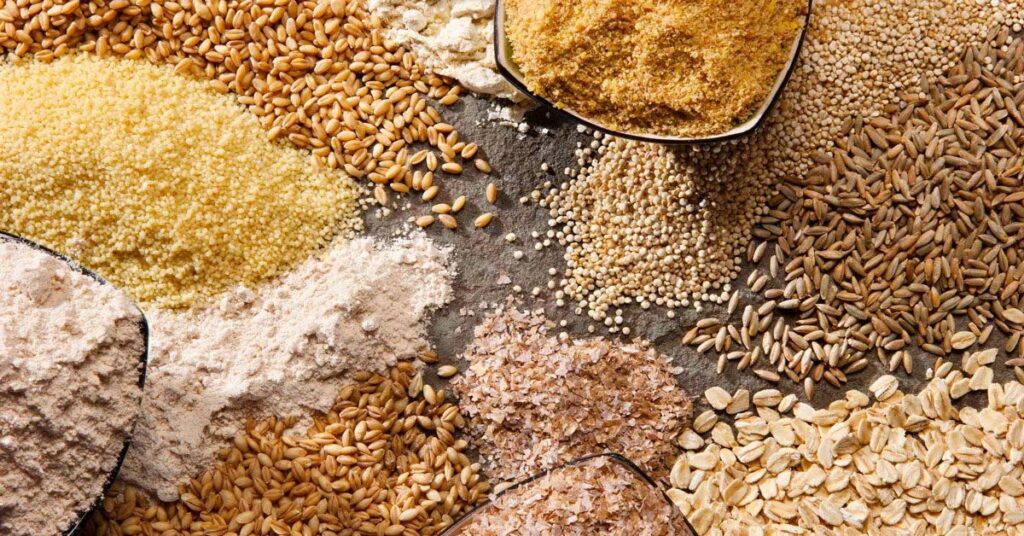In a modern world dominated by processed foods and sedentary lifestyles, the Paleo diet emerges as a nutritional philosophy harking back to our ancestors’ eating habits. Also known as the caveman diet or ancestral diet, Paleo is grounded in the idea of consuming foods that our Paleolithic ancestors might have eaten. This article delves into the details of the Paleo diet by examining its principles, potential benefits, food choices, and considerations for those embarking on this journey to embrace a more primal way of eating. Let’s get started.
Also Read: Keto Diet: A Beginner’s Guide to Ketogenic Diet
Understanding The Principles of Paleo Diet
Paleo Diet is basically the philosophy of “Eating Like a Caveman”. The core idea is to align dietary choices with what our ancestors might have consumed during the Paleolithic era, focusing on nutrient-dense foods that support overall health and well-being. Let’s know the principles of Paleo diet so that you can get an idea of how to follow this diet.

Emphasis on Whole, Unprocessed Foods
The core principle of the Paleo diet centers on consuming foods in their most natural state, free from additives, preservatives, and processing. By opting for whole foods, individuals prioritize nutrient density and avoid the potential pitfalls associated with highly processed items common in the modern diet.

Lean Proteins from Animal Sources
This type of diet places a strong emphasis on lean proteins derived from animal sources, such as: 1. Grass-fed meats like Beef, lamb, and other meats from animals raised on pasture. 2. Poultry like Chicken, turkey, and other fowl. Lastly, 3. Game meats like wild-caught game meats for those seeking variety. This focuses on animal proteins aligned with the presumed dietary habits of our ancestors, who relied heavily on hunting for their protein needs.

Abundance of Fruits and Vegetables
The Paleo diet encourages the consumption of a variety of fruits and non-starchy vegetables, emphasizing color and diversity. These foods provide essential vitamins, minerals, fiber, and antioxidants. Common choices include: 1. Berries like blueberries, strawberries, raspberries. 2. Leafy Greens like spinach, kale, Swiss chard. Lastly, 3. Colorful Vegetables like bell peppers, tomatoes, carrots.

Healthy Fats from Natural Sources
Healthy fats play a crucial role in the Paleo diet, contributing to satiety, energy production, and overall well-being. Preferred sources include avocado which is a nutrient-dense source of monounsaturated fats, nuts and seeds like Almonds, walnuts, chia seeds, flaxseeds and lastly, oils such as olive oil, coconut oil, and avocado oil for cooking. By prioritizing these fats, this diet contrasts with the conventional fear of fat prevalent in modern nutritional trends.

Exclusion of Grains
One of the defining features of the Paleo diet is the exclusion of grains, including wheat, rice, oats, and barley. The rationale is based on the idea that grains became a significant part of the human diet only with the advent of agriculture, and our ancestors did not consume them in significant quantities.

Elimination of Legumes
Legumes, encompassing beans, lentils, and peanuts, are also excluded from this diet. While legumes offer plant-based protein, the diet contends that they may contain anti-nutrients, such as lectins, that could be harmful when consumed in large quantities.

No Dairy Products
The Paleo diet excludes dairy products, as these were not part of the ancestral diet before the domestication of animals. While dairy provides essential nutrients like calcium, the Paleo approach suggests obtaining these nutrients from alternative sources.

Limited Processed Sugars and Salt
The diet discourages the consumption of refined sugars and excessive salt. Instead, individuals are encouraged to rely on the natural sweetness of fruits and the inclusion of herbs and spices for flavoring.

Focus on Grass-Fed and Wild-Caught
Whenever possible, adherents of the Paleo diet opt for meats and fish that are grass-fed, pasture-raised, or wild-caught. This choice aligns with the belief that these sources offer a more natural and nutrient-dense profile compared to conventionally raised counterparts.
Benefits of Paleo Diet
Weight Management
One of the most widely recognized benefits of the Paleo diet is its potential for weight management. The emphasis on lean proteins and healthy fats helps individuals feel fuller for longer periods, potentially reducing overall calorie intake. Moreover, by avoiding refined sugars and carbohydrates, the diet may contribute to more stable blood sugar levels, reducing cravings and promoting better appetite control.

Improved Nutrient Intake
The Paleo diet encourages the consumption of nutrient-dense, whole foods, resulting in enhanced vitamin and mineral intake. The abundance of fruits and vegetables in this diet provides essential vitamins, minerals, fiber, and antioxidants crucial for overall health. Furthermore, wild-caught fish, a staple in the this diet, is rich in omega-3 fatty acids that is beneficial for heart and brain health.
Balanced Blood Sugar Levels
The exclusion of refined sugars and processed carbohydrates in this type of diet can easily contribute to improved blood sugar regulation. This can also lead to help prevent rapid spikes in insulin levels, potentially lowering the risk of insulin resistance.

Enhanced Digestive Health
The Paleo diet’s exclusion of grains and legumes, which may contain anti-nutrients like lectins and phytates, aligns with potential benefits for digestive health. Some individuals report reduced bloating and digestive discomfort after eliminating grains and legumes. Also, the non-starchy vegetables and fruits provide essential fiber for digestive regularity.

Increased Energy Levels
Adherents of the Paleo diet often report experiencing increased energy levels and improved mood because balanced macronutrients, particularly the sustained energy provided by fats, can contribute to stable energy levels. Some individuals report improved mood and mental clarity, although individual responses vary.

Anti-Inflammatory Effects
The Paleo diet’s focus on whole, nutrient-dense foods may contribute to an anti-inflammatory effect. Omega-3 Fatty Acid is found in abundance in wild-caught fish and these healthy fatty acids are associated with reducing inflammation in muscles and bones. In addition, fruits and vegetables contain various phytonutrients with potential anti-inflammatory properties.
Potential for Allergen Identification
As the Paleo diet excludes common allergens like gluten and dairy, individuals may discover sensitivities or allergies they were previously unaware of. Some individuals report improvements in skin conditions, such as eczema or acne, after eliminating potential allergens.

Adaptability and Personalization
The Paleo diet’s flexibility allows for adaptation to individual needs and preferences as the individuals can tailor the diet to accommodate specific health goals, activity levels, and dietary preferences. For this reason, its adaptability contributes to the diet’s sustainability for long-term adherence.
Paleo-Friendly Foods
Proteins
- Lean Meats: Chicken, turkey, lean beef, and pork.
- Fish: Salmon, trout, mackerel, and other fatty fish.
- Eggs: A cheap and versatile protein source.
Vegetables

- Leafy Greens: Spinach, kale, and Swiss chard.
- Colorful Vegetables: Bell peppers, tomatoes, carrots, and broccoli.
- Root Vegetables (in moderation): Sweet potatoes and beets.
Fruits

- Berries: Blueberries, strawberries, and raspberries.
- Avocado: A nutrient-dense source of healthy fats.
- Citrus Fruits: Oranges, lemons, and grapefruits.
Healthy Fats

- Nuts and Seeds: Almonds, walnuts, chia seeds, and flaxseeds.
- Oils: Olive oil and coconut oil.
- Avocado: A versatile source of healthy monounsaturated fats.
Herbs and Spices

- Herbs: Basil, thyme, rosemary, and cilantro.
- Spices: Turmeric, ginger, and garlic.
Considerations for Following Paleo Diet
- The Paleo diet may not be suitable for everyone, and individual responses to dietary patterns can vary.
- Ensuring a balanced intake of macronutrients and micronutrients is crucial to meet nutritional needs.
- Combining this type of diet with regular physical activity aligns with a holistic approach to health and wellness.
- Some individuals may find the strict adherence to the Paleo diet challenging over the long term which is why variations in the diet may be necessary for sustainability.
Conclusion
The Paleo diet, rooted in the principles of consuming whole, unprocessed foods reflective of our ancestors’ diet, offers a unique approach to nutrition. While its potential benefits include improved nutrient intake, weight management, and blood sugar regulation, individuals should approach this dietary philosophy with an understanding of their own needs, preferences, and lifestyle. As with any diet, consulting with healthcare professionals and considering individual health goals are essential steps in making informed choices about adopting the Paleo lifestyle. Whether one fully embraces the caveman diet or incorporates Paleo principles into a broader approach to healthy eating, the journey toward optimal health involves mindful food choices, balance, and a commitment to overall well-being. Hopefully, you found this article on the Paleo diet helpful enough. If you really did then let us know your valuable thoughts in the comment section below. Thanks for visiting and appreciating our work.
